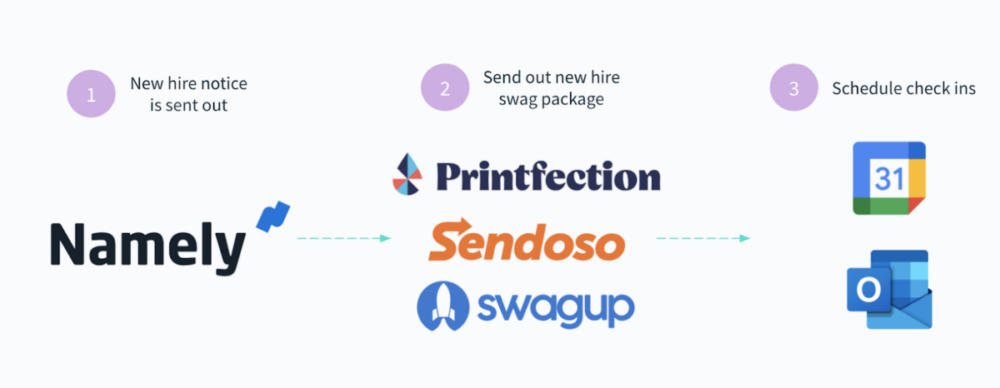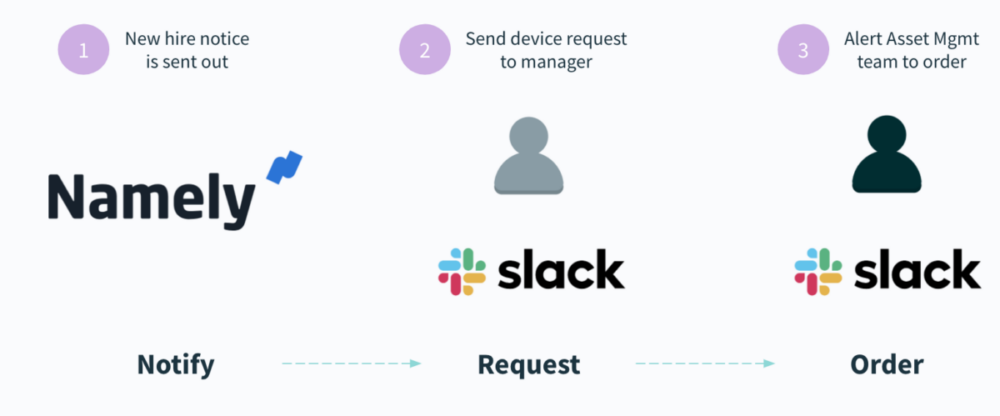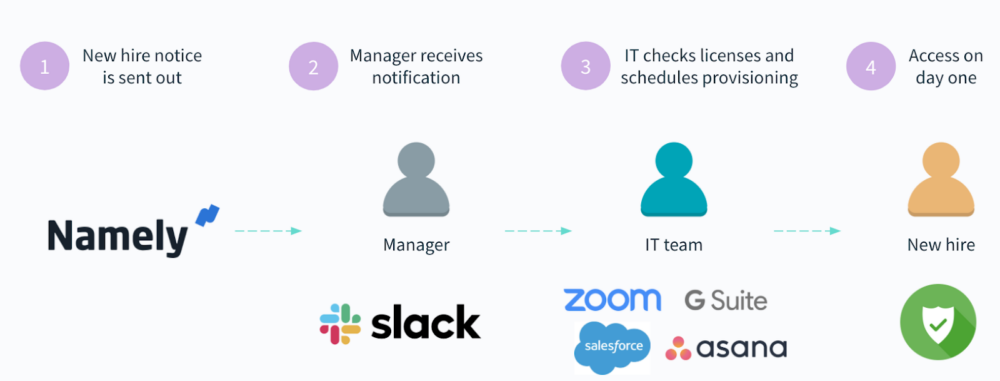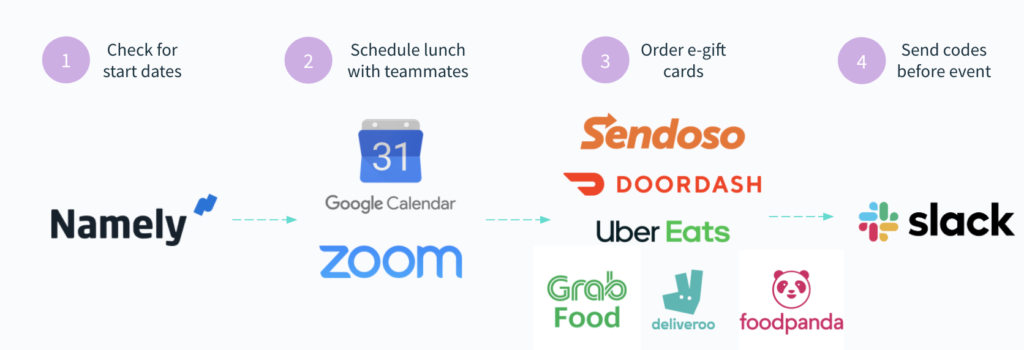It’s no secret that a well-run onboarding program translates to employee success.
Research by Glassdoor, for example, proves that an effective onboarding experience improves employee retention by 82% and productivity by more than 70%.
The challenge of providing a quality onboarding experience, however, will magnify as more and more organizations bring in new hires who work remotely. According to Upwork, by 2028, nearly 3 in every 4 teams at a given organization will have at least one employee who works remotely.
So how can your organization provide a best-in-class virtual onboarding experience? By focusing on and optimizing for the following:

We’ll explore how you can address each of these areas, but let’s start by clarifying what virtual onboarding is.

How enterprise automation can transform your onboarding process
To highlight the impact enterprise automation can bring, we’ll break down how onboarding processes look when performed manually versus automated.
What is Virtual Onboarding?
It’s the process of integrating a new hire into your organization in a way that’s entirely remote. This includes activities like introducing them to their colleagues and providing them with the equipment and apps they need.
Though your team can perform virtual onboarding manually, the scope of activities required calls for implementing a variety of workflow automations. We’ll review how these automations can look across the 5 areas of focus outlined above.
Related: Everything you need to know about performing onboarding automation
How to Run Virtual Onboarding Successfully
Here’s a closer look at 5 ways to onboard remote employees effectively.
1. Keep up the excitement
When a new hire comes on board, they’re naturally excited about the opportunity and motivated to hit the ground running. You can fuel these early emotions even further and encourage them to stay excited for longer by adopting the following workflow automation.

1. Once a new hire notice gets sent out from an HRIS, like Namely, the workflow gets triggered.
Note: We define a new hire notice as an email that gets sent out to the hiring manager, the HR team, the legal team, etc. The email notifies them of details like the new hire’s start date, employment type, and who they’ll be reporting to.
2. A week before the new hire’s start date, they’ll receive company swag, via a platform like Sendoso, as well as an email that outlines what they can expect on their first day.
3. During the new hire’s first day, they’ll receive invites to monthly check-ins with a member of HR.
Choon Yen Khoo, the Head of People Operations at Workato, explains how this automation has benefited her team as well as new hires:
“It allows us to spend more time onboarding new hires and answering any questions they may have.”
2. Get set up for remote work
It goes without saying that a new hire needs all of the necessary equipment for their job by the beginning of their first day. Any delay can prevent them from being productive and it might even dampen their initial excitement.
You can all but ensure that they get the equipment they need on time by using this workflow automation:

- Like the previous automation, the workflow gets triggered once a new hire notice gets sent out from the HRIS.
- The hiring manager receives an alert via the organization’s business communications platform (e.g. Slack), asking them about the devices that new hire needs.
- The asset management team in the new hire’s regional area then receives a message in the business communications platform, notifying them of the request by the hiring manager. They can then fulfill the equipment order promptly to ensure that the new hire receives it on time.
Related: How to automate recruiting, onboarding, offboarding, and day-to-day processes
3. Deliver tools and technology
Like equipment, new hires need access to the right set of applications if they want to hit the ground running. Done manually, however, this process can quickly become overwhelming. After all, each new hire likely needs access to a different combination of apps, along with the right permission levels.
To streamline app provisioning for every new hire, you can adopt this workflow automation:

- When the new hire notice gets sent out, the workflow begins.
- The hiring manager receives a message in a platform like Slack, asking them to select the apps the incoming new hire needs, along with the corresponding access levels.
- Employees in IT receive this request via a platform like Slack. They can then confirm that there are enough licenses for each app they want to provision, and assuming there are, schedule the app provisionings for the new hire’s first day.
4. Create a support system
As your organization scales, you’ll likely have several new hires asking a common set of questions. These can range from “What are the company’s policies around PTO?” to “How can I submit expenses?”
You can empower each new hire to get their questions answered quickly and without bothering longer-tenured employees by implementing the following automation:

- Once your HRIS identifies employees who are set to start at the same time, the workflow gets triggered.
- A calendar tool, like Google Calendar, invites each incoming new hire to their first orientation meeting.
- A platform like Slack then creates a channel that includes all new hires starting at the same time.
Jessalyn Klein, Workato’s Head of People and Culture, explains how providing a cohort channel in Slack has benefited the new hire’s onboarding experience:
“It helps them feel connected, and it allows them to get their questions or issues addressed as quickly as possible.”
Related: Common ATS integration examples
5. Engage with teammates
As new hires work in isolation, they miss out on opportunities to build rapport with colleagues.
You can help them connect with their new teammates by building this automation:

1. Once your HRIS identifies employees who’ve started in a given time frame, the workflow gets triggered.
2. New hires automatically receive calendar invites (that include Zoom meeting details) for having lunch with a specific colleague on their team.
3. During the morning of the day that the new hire and their teammate are scheduled to meet, they’re each given a gift card for an app like DoorDash—allowing each to enjoy a free meal together.
Ready to start incorporating automation into your remote onboarding processes? Learn how Workato, the leading enterprise automation platform, can help by scheduling a demo with one of our automation experts!
